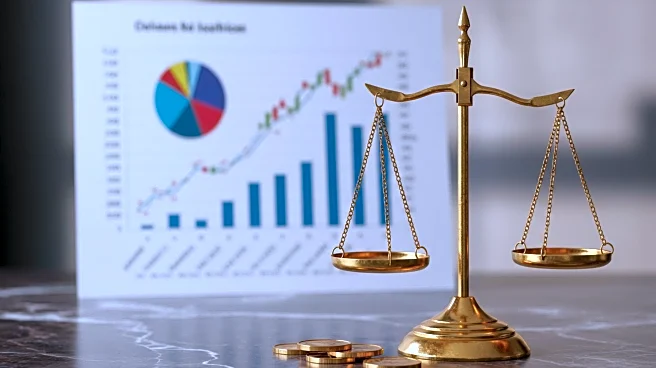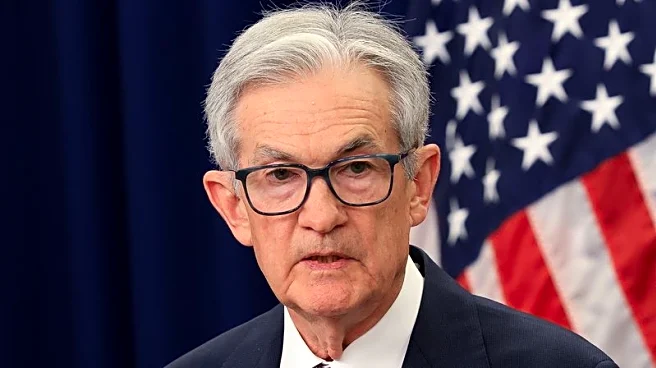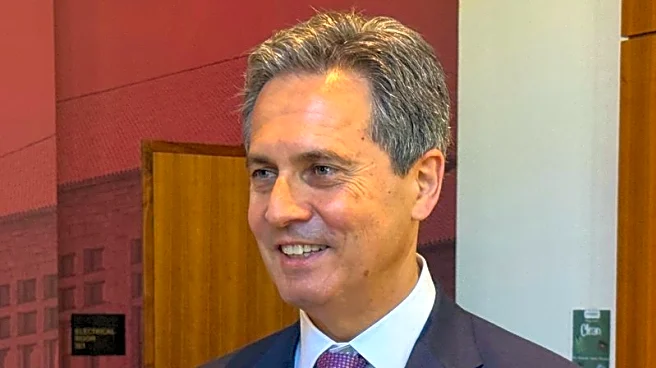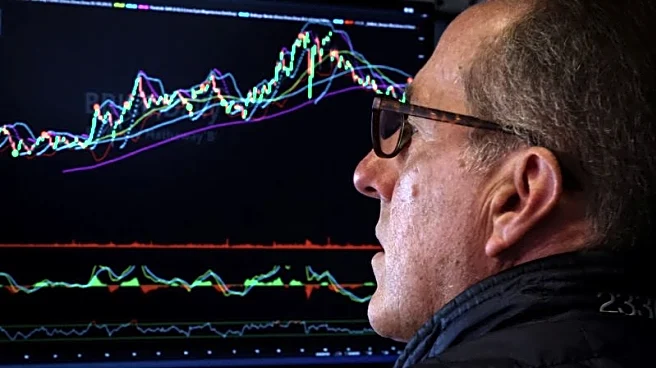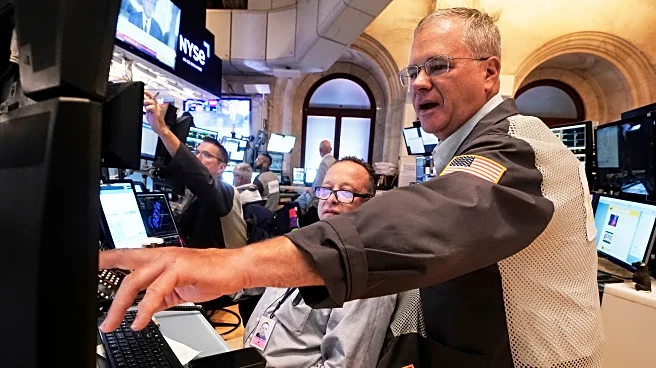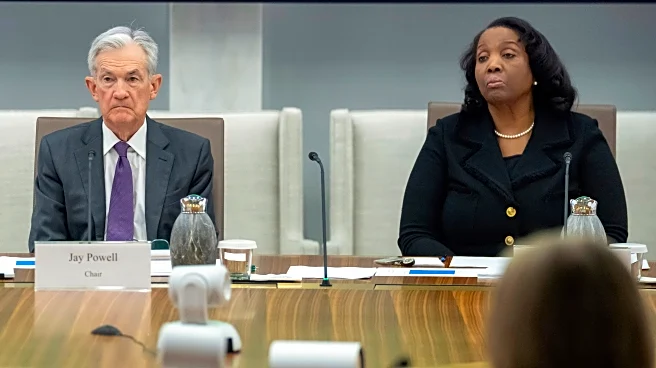What's Happening?
Federal Reserve Chair Jerome Powell has signaled a likely interest rate cut in September, citing rising downside risks to employment. Speaking at the Fed's annual conference in Jackson Hole, Wyoming, Powell acknowledged that while inflation remains somewhat elevated, the balance of risks is shifting. The labor market is experiencing a slowdown in both supply and demand for workers, leading to potential risks of higher layoffs and unemployment. Investors responded positively to the prospect of a rate cut, with significant gains in the stock market. Futures markets are pricing in a high probability of a rate cut in September, with another potential cut in December.
Why It's Important?
A potential rate cut by the Federal Reserve could lower borrowing costs for millions of Americans, affecting credit cards, auto loans, and mortgages. This move is seen as a response to the slowing job growth and rising inflation, which presents a challenging situation for the Fed's dual mandate. The decision to cut rates could provide relief to consumers and businesses, but it also raises concerns about the long-term impact on inflation and economic stability. The Fed's actions will be closely scrutinized by economic stakeholders, including policymakers, investors, and the general public.
What's Next?
The Federal Reserve will review upcoming employment and inflation reports before its mid-September meeting to make a more informed decision on interest rates. The Fed's policy shift, announced by Powell, indicates a return to targeting 2% inflation, moving away from a previous strategy that allowed for higher inflation to compensate for past low levels. This change reflects the Fed's focus on stabilizing prices while considering employment levels. The outcome of the September meeting will be pivotal in shaping the Fed's monetary policy direction for the remainder of the year.
